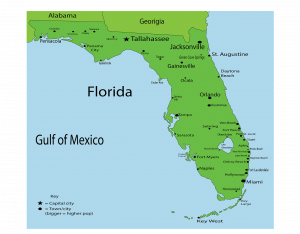What Does BOM (Back On Market) Mean In Real Estate? (2022)
Go Back To Previous PageThe world of real estate is tumultuous, even when everything appears to be going well. Professionals invent terms to help people get the general gist of a property’s situation. What does “BOM” mean in real estate? In New York City, it’s not unusual to hear about a property going “BOM.”
gist of a property’s situation. What does “BOM” mean in real estate? In New York City, it’s not unusual to hear about a property going “BOM.”
But what does BOM in real estate mean when you’re discussing it? BOM, or “Back On the Market,” is an acronym used by real estate agents to describe a property back on the market after an initial prior offer fell through.
This can occur during the home-buying process due to a lack of funding, a sudden issue with the buyer, or simply a change of mind.
If you recently heard of a BOM real estate property, you might wonder what it means for your chances. Believe it or not, this is a pretty easy-to-read situation.
What Does BOM Mean in Residential Real Estate or Commercial Real Estate?
If you’re the person selling the property, it’s a major letdown.
A BOM property is a home where the seller accepts an offer and signs a contract with a buyer. The sale was supposed to go through, but unfortunately, the deal did not.
BOM stands for “back on the market” in real estate and is a common acronym used by real estate agents. As the name suggests, a listing BOM is available after a written offer or contract falls through.
Because the sale didn’t go through, the seller was forced to reject the terms of the offer by default, which resulted in the house being returned to the market for sale. If a property is back on the market without a kick-out clause, it means the owner is entertaining new offers.
There are two causes.
1. Accepted Offer Fell Through
If your home is back on the market because an accepted offer fell through, there’s no need to change your listing’s status.
Many MLS systems have only three primary listing statuses: active, under contract, and sold. If, for some reason, your MLS listing has a pending, offer-in, or accepted offer status, ensure that your listing agent updates it to “active.”
For this reason, some listing agents accept two offers simultaneously, and some sellers negotiate two contracts.
2. Signed Contract Fell Through
If your deal was in contract and the buyer still fell through, you must ask your listing agent to change the listing status from “in-contract” to “active.” This will typically trigger a notification on many people’s automatic search alerts.
In either of these two scenarios, it can also be helpful if your listing agent adds “back on the market” to the beginning of the listing description, perhaps in all capital letters, so that people know why it hasn’t sold yet.
Why Would A House Go BOM in Real Estate?
A seller typically puts a house back on the market after a previous deal with a buyer falls through. The seller still wants to sell and will look for another buyer.
look for another buyer.
Several common reasons explain why a home might go back on the market. The issues below are the most common when seeing a house go BOM. The listing might have had an accepted offer or even a signed contract; however, the buyer backed out for some reason.
- Payment Issues. The sale will likely fall through if the lender denies a potential buyer’s loan after pre-approving them. Many homeowners prefer not to sell to someone who requires financing. Or perhaps the home appraised low, and an appraisal contingency clause protected the buyer in the contract.
- Unmentioned Problems/Bad Faith Sales. Most contracts include a contingency clause that allows the sale to be terminated if the seller discovers a significant problem with the house, suggesting that you may need to exercise caution.
- It failed the Home Inspection. While this is not the best news, a destructive home inspection will quickly put your home back on the market.
- Contingency-Related Issues. For example, this would cover a sale only if the seller performs a repair.
The seller must refund the earnest money deposit to the escrow account.
Are BOM Houses A Bad Idea?
It takes a lot to cause a house to go back on the market after accepting an offer and signing a contract, and at the very least, it takes some eyebrow-raising circumstances. That’s why most seller documents with a BOM tend to include a note stating that the BOM was obtained through no fault of their own.
Can a Listing Be Back on the Market Through No Fault of the Seller?
Yes, just because a listing is back on the market does not mean there’s something wrong with the property. The property is likely back on the market because the buyer has chosen to back out. They may have gotten cold feet or realized they were not financially qualified. Or didn’t meet a co-op’s financial requirements.
Sometimes, a buyer will withdraw from a contract deal simply because the co-op board rejected them. Or perhaps the buyer couldn’t get a loan or close with a loan because the buyer lost their job at the last minute. Things like this can happen despite the seller’s best efforts.
Many listing agents are very upfront and honest about what happened, for example, if the co-op board rejected the buyer.
How Do Realtors Mention The Time A BOM Home Has Stayed On The Market?
One of the most significant factors that can affect a seller’s ability to get a reasonable price is the time on the market. When a house goes BOM, the time on the market does not reset to zero; it’s as if it has been on the market since the beginning.
For example, if a house takes 42 days to accept an offer, the listing agent will take it off the market. If the offer falls through and the place goes BOM, the next day, it’ll show up as 43 days on the market, and it does not go back to 0, much to the seller’s chagrin.
How Does A BOM in Real Estate Affect Home Price?
Returning to the market after you were almost ready to sell is a devastating blow to your potential sale price, primarily because of the sale’s optics. Most people believe they can negotiate more when a home has been on the market for a while.
A place that has been on the market for a while isn’t getting much attention, as one would hope. People usually expect a price decrease after several weeks on the market, and they’ll typically ask for one if they don’t see a reduction.
How Common Is It For A Home To Go Back On the Market?
It’s challenging to find a specific statistic for this in New York City, but houses often fall into disrepair over time. Around 20 to 30 percent of all homes for sale will return to the market at least once before they sell.
What Should I Do To Prevent My Home From Going Back On the Market?
Not all home sales will be able to happen, but that doesn’t mean you can’t work to prevent it. The best thing you can do is be proactive about reducing the reasons for a home-going BOM:
- Hire a home inspector and address the issues that led to your failure. You should hire a home inspector before listing your home, especially in an area with low demand. If you have a historic home, it may even be a requirement built into your agreement.
- Give preference to cash home buyers. This prevents lenders from deciding they don’t want to fund your buyer’s purchase.
- Watch the contingencies in the offer. Some contingencies put the seller at a significant disadvantage. The best outlook on high-risk purchases is a “show must go on” attitude.
- If your property has already had one sale fall through, you must be upfront about what happened. Transparency is key here.
The Takeaway
If your home recently went BOM, you may worry about what this means for your bottom line. It can indicate that you will have a more challenging time selling your home.


